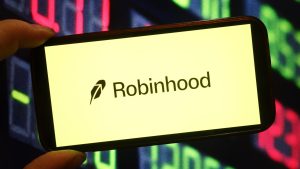Having thoughts about generating six-figures worth of second income a year isn’t a fantasy. There are investors out there that have built solid dividend portfolios over time that yield in excess of £20k a year. For an investor starting out that’s trying to reach this goal, here are some key details to help along the way.
Targeting a high yield, managing risk
One way to achieve this goal would be to invest a regular amount each month via an ISA. The benefit of the ISA is that any income received from dividends isn’t taxable. This means that all of the dividends can be reinvested back in stocks. In turn, this should help the portfolio to compound gains at a faster pace.
Please note that tax treatment depends on the individual circumstances of each client and may be subject to change in future. The content in this article is provided for information purposes only. It is not intended to be, neither does it constitute, any form of tax advice. Readers are responsible for carrying out their own due diligence and for obtaining professional advice before making any investment decisions.
An investor can currently put £20k a year in an ISA tax free. This works out at £1,666 a month. I think it makes sense to invest each month. Yet for cash flow reasons it might be easier for someone to invest less frequently, such as once a quarter.
Whatever the frequency, the main strategy idea is built around picking 75% core dividend shares, with 25% in higher risk (but higher-yielding) options. This can help to boost the overall yield of the portfolio significantly, without increasing the overall risk that much. For example, if 75% of the stocks yielded 5% but 25% yielded 10%, my average is a very respectable 6.25%.
A property income share
One high-yield stock option to consider is Real Estate Credit Investments (LSE:RECI). The stock currently has a dividend yield of 9.72%, with the share price down 2% over the past year.
The company invests and manages a portfolio of real estate debt, mostly focused on Europe. The debt’s secured by commercial or residential properties, so the risk level’s lower than if the debt was unsecured.
One of the key aims of the fund is income, with the business paying out a regular quarterly dividend. This has been a stable 3p per share, paid each quarter for many years. Given the nature of operations, I think this is sustainable going forward.
It’s true that a debtor default is a risk. Whenever anyone buys debt, it comes with the risk of the original loan not being fully repaid. Yet given that property is secured against these deals, I feel the risk’s manageable.
The numbers
If someone invested the full ISA allowance each month and built a portfolio with an average yield of 6.25%, things could grow quickly. After 11 years, the portfolio could be worth just under £320k, which would mean in the following year it would provide over £20k in dividend income.
Of course, these are just forecasts. Trying to predict income payments a decade into the future isn’t an exact art by any means! But by making use of high-yield dividend shares and the ISA benefits, an investor can certainly aim high.
This post was originally published on Motley Fool





